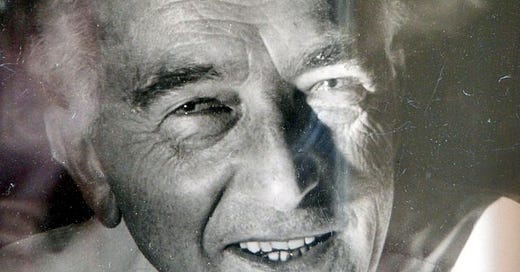It is not unusual for scholars to deny that dehumanization is real. They find it implausible that human beings sometimes really conceive of others as less than human creatures. Seeming dehumanization, they argue, is just a way of denigrating others.
Sometimes referring to others as subhuman creatures is just a way of denigrating others, a kind of name-calling. But this doesn’t entail that dehumanization is unreal. Sadly, there is an enormous amount of evidence that people that describe others as less than human often mean their words to be taken quite literally.
Consider the case of Dr. Wilhelm Bayer. was part of the Nazi T4 “euthanasia” program—a program for killing disabled people. The T4 program began with the murder of disabled children, perhaps as 8000 of them, by starvation, gassing, and lethal injection. Later on, the T4 staff were redeployed to take their killing expertise the Aktion Reinhardt extermination camps in Poland: Bełżec, Sobibor, and Treblinka.
Bayer was director of the Rothenburgsort Pediatric Hospital in Hamburg. After the was, he and seventeen other doctors with crimes against humanity—the murder of at least fifty-six disabled children. All of them pled Nicht Schuldig, not guilty. But on what grounds? Here is how historian Johann Chapatout tells the story in his superb book The Law of Blood: Thinking and Acting as a Nazi.
Dr. Wilhelm Bayer objected strenuously to the charge of a “crime against humanity.” “Such a crime,” he asserted, “can only be committed against people, whereas the living creatures that we were required to treat could not be qualified as ‘human beings’”
The judges found this defense persuasive. Bayer was found not guilty and allowed to keep his medical license.
Was Bayer dissimulating to evade punishment? Not likely. The view that cognitively disabled children are not human was commonplace amongst T4 doctors, who referred to them as “monster,” “empty shells,” and “masses of flesh.”
Dr, Werner Catel was another T4 doctor, a very senior one. He ran a killing center at University Children's Hospital in Leipzig. After the war, Catel continued his career as Professor of Pediatrics at the University of Kiel.
In 1961, he gave an interview to Der Spiegel. Pressed by the interviewer, he made such remarks as:
“Believe me, it is definitely possible to distinguish these soulless beings from developing humans.”
“The doctor…must discuss the situation with the parents. He must tell them the truth, namely, that this being can no longer be helped, that it will never become a human being.”
“We are not talking about humans here, but rather about beings who were merely procreated by humans and that will never themselves become humans endowed with reason and a soul.”
It strains credulity to deny that these two men did not mean what they said. By ordinary hermeneutic standards, we should accept that they sincerely believed that cognitively disabled children are subhuman creatures.
These are just two of many examples of this strange and terrifying phenomenon. Dehumanization is real. Sadly, it is all-too-real.
This Newsletter will always be free. The matters that I discuss are too urgent and consequential to be hidden behind a paywall. But if you would like to support my work, paid subscriptions are always greatly appreciated.







Humm... broadly I am in agreement with you; but in the case of some people with very severe mental disability we are dealing with something a bit different. At the very least I think we would have to distinguish between different types of dehumanisation. If someone is incapable of talking or understanding speech or even of feeding themselves, then it is difficult for anyone to avoid the conclusion that they are not fully "human" as we typically understand the word.
It strikes me as a very different type of dehumanisation to the type of dehumanisation that permits genocide of an entire ethnic group. On the one hand we have a type of dehumanisation that is, to some extent at least, based upon objective criteria. On the other hand we have a type of dehumanisation that is based on pure hatred and tribalism.
At a certain point, I think we have to question whether the term "dehumanisation" applies. If someone has a severe road accident and is so profoundly brain damaged that they will have to be in a coma for the rest of their life, is it "dehumanisting" to describe them as being in a "vegetative state" or to say that they are not fully human at that point? I'm going to assume that the answer to that is a clear "no", as few would object to that. Given this, why would it be any more "dehumanising" for someone to be described in such a way as a result of complications at birth?
I simply think that we need to be cognisant of the potential differences between different types of dehumanisation and avoid drawing overly broad parallels between them.